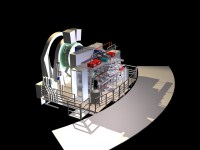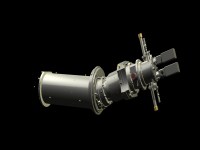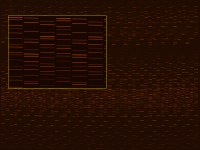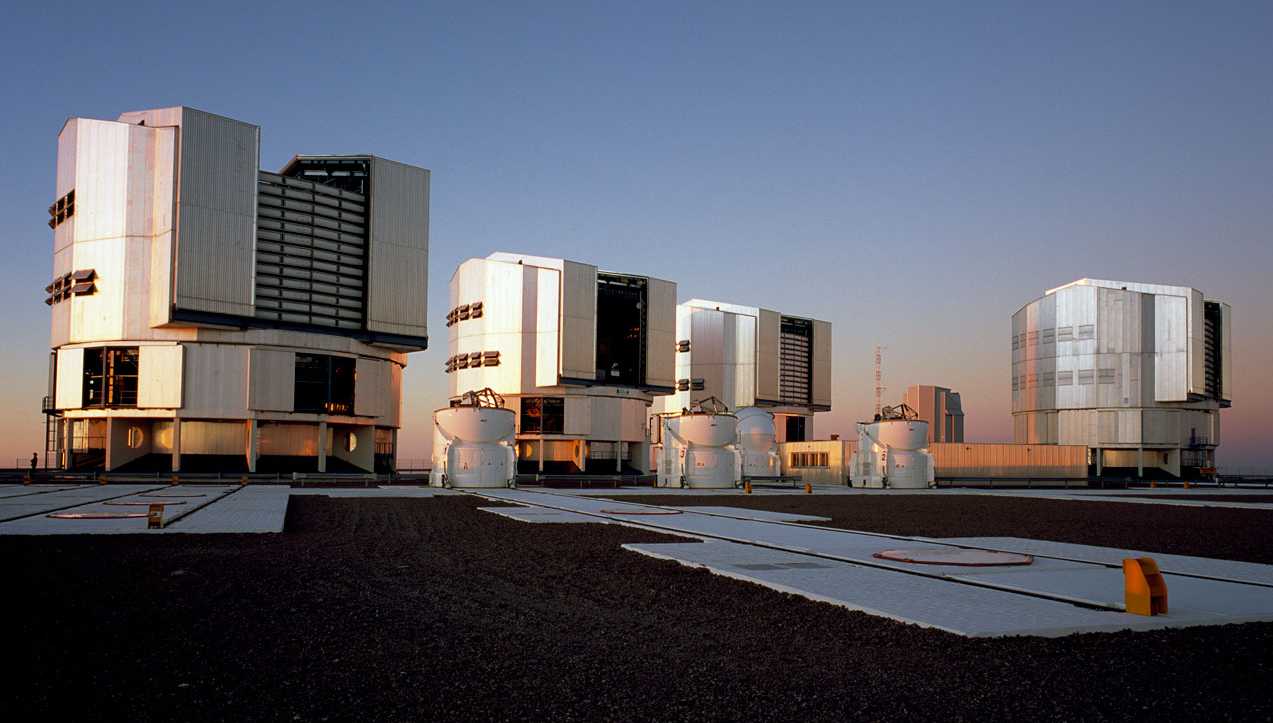VLT/MUSE
Project Leaders: Professors Simon Lilly and Marcella Carollo
Summary
MUSE is one of four "second generation" science instruments being developed for the 8m telescopes of the ESO Very Large Telescope (VLT). MUSE is an integral field spectrograph of unprecedented power that produces R ~ 3000 spectra over 4700-9400 Å for 90,000 spatial pixels in a 60x60 arcsec2 contiguous field. This is achieved by an array of 24 identical integral field spectrographs, each with a 2kx4k CCD detector. MUSE is being developed by a European consortium led by CRAL Lyon, and including ourselves, the University of Gottingen, the University of Leiden, AIP Potsdam, LATT Toulouse, and ESO itself. ETH contributes the 24 spectrograph units for the instrument. The MUSE instrument is scheduled to undergo commissioning on the VLT in early 2013.
Objectives
MUSE will be used by the Science Team for a number of scientific investigations in approximately 250 nights of Guaranteed Observing Time on the VLT spread over 5-6 years, starting in 2013.
Within the integrated MUSE Science Team, the ETH groups of Professors Carollo and Lilly have the following main scientific objectives:
The detection of spatially extended Lya emission from the intergalactic medium
Observations of the fields of very bright quasars will search for fluorescent emission from neutral Hydrogen. The ionizing radiation from the quasars leads to a higher level of recombination radiation from neutral gas, making it possible to detect spatial extended emission from the filamentary streams of cool gas that are hypothesized to be feeding the high star-formation rates seen in galaxies at high redshifts, but which have not hitherto been detected directly. MUSE will be targeted at the locations of the most massive galaxies in the vicinity of the quasars, since these are the most likely sites of such structures. The high throughput, high spectral and spatial resolution and contiguous integral field coverage will be essential for this project.
The study of outflowing material around star-forming galaxies
There is now good evidence that galaxies with high star-formation rates at high redshifts are the source of large galactic-scale winds that carry enriched material out of the galaxies. These are seen as blue-shifted absorption features in galactic spectra. We have also recently shown that the absorption of Mg, seen against background sources, is asymmetrically distributed, indicating that the wind is aligned with the polar axis of disk galaxies. With MUSE, we will be able to map this distribution in 3-d velocity/space by observing favourable asterisms of background galaxies. This will enable us to understand the dynamical evolution of the winds, how they are accelerated by the galaxy, and how they interact with the surrounding medium, giving new insights into the enrichment of the IGM and on the possible feedback mechanisms that control the inflow of material back onto galaxies.
A census of very faint Lyman-a emitting galaxies
Deep integrations with MUSE in selected fields will yield unprecedented large samples of very faint Lyman-a emitting galaxies over a broad span of redshift 3 < z < 6.5. Our main interest is in using these to trace the filamentary structure of the Universe at these redshifts with the goal of understanding where galaxies form within this cosmic-web structure.
Spatially resolved kinematic information on galaxies at intermediate redshifts
Deep integrations with MUSE will yield spatially resolved kinematic data on large numbers of galaxies at intermediate redshifts 0.5 < z < 1. These can be analysed to yield dynamical information on the evolution of the disks that will complement the data on more distant systems that we have been obtaining with the SINFONI instrument at the VLT. This will give new insights into the inflow of material onto galaxies and the processes controlling star-formation in galaxies.
The study of nearby galaxies
MUSE will also be used by us to study a large sample of nearby galaxies with the aim of understanding their dynamical state especially in their nuclear regions, which harbour black-holes and nuclear star-clusters.
CAD
-

CAD representation of the MUSE instrument on one of the Nasmyth focus platforms of the VLT. -

CAD representation of one of the 24 spectrographs for MUSE. ETH Zurich has provided this part of the instrument. -

First light image (with blow-up) of an arc source through one of the spectrograph units. Each MUSE exposure will consist of 24 times as much data. The spectrograph has exceptional ly high throughput and image quality.
Link to main MUSE site: external page MUSE
Please contact for further information Prof. Simon Lilly or Prof. Marcella Carollo.
